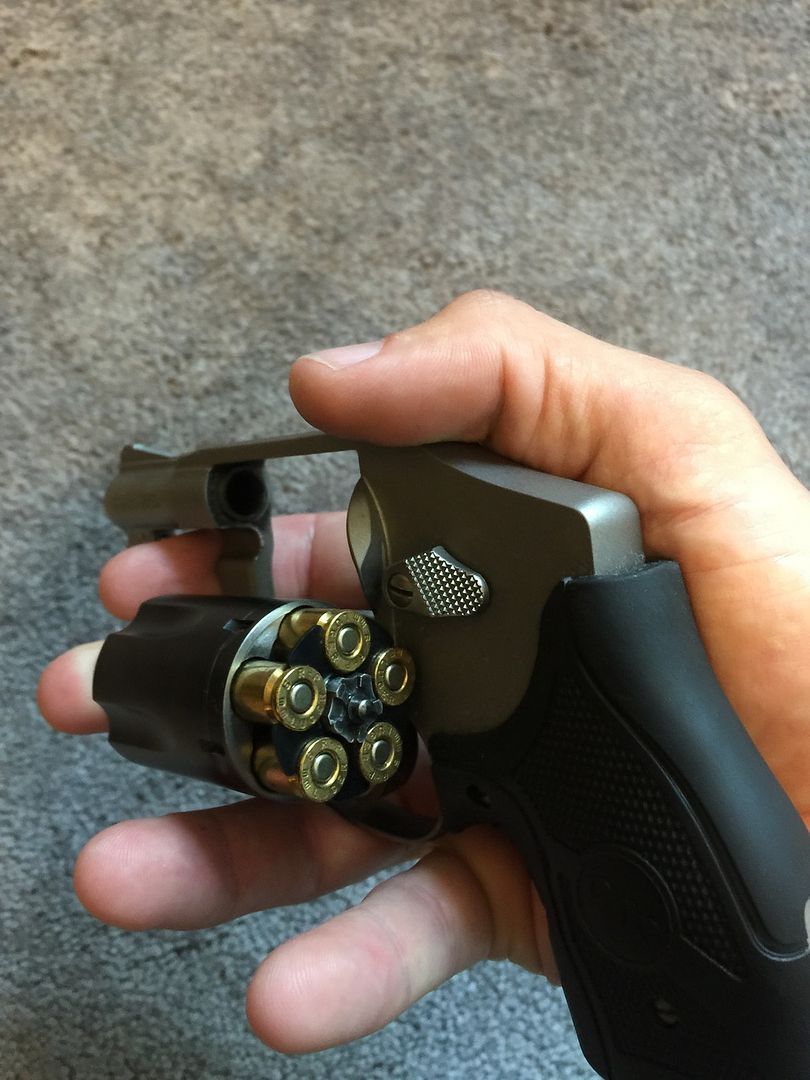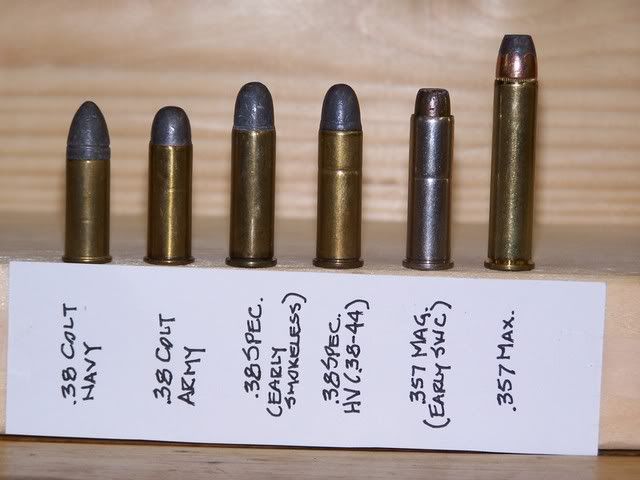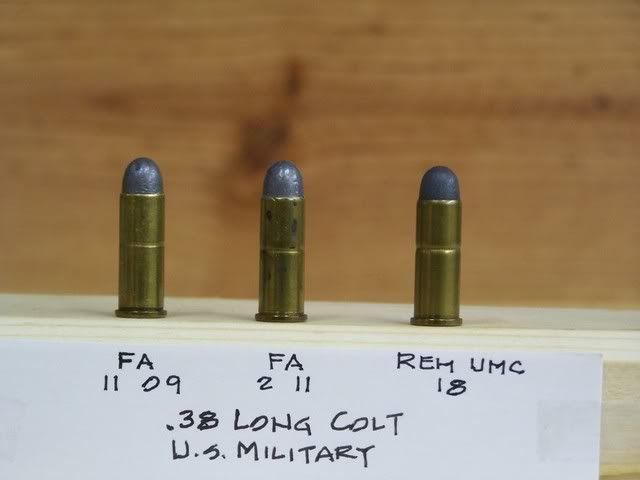As I've gotten older, I've found I'm actually more fond of the .38spl than some of the other calibers I'm used to. In fact, two of the last 3 guns I've purchased has been .38/.357 revolvers. As big of a 1911 fan as i am, my current favorite gun that I keep bringing to the range is my 686+.
You are using an out of date browser. It may not display this or other websites correctly.
You should upgrade or use an alternative browser.
You should upgrade or use an alternative browser.
History of the .38 Special
- Thread starter Remington 51
- Start date
It is a good read... personally, I like things that touch on the FBI Miami shootout, being I did my senior paper in college on it.
.38 Special is a good caliber, but it is an old caliber (not date produced, but back when the inception was right at the move from black to smokeless powder). With the exception for some outliers, like 5.7mm, long pistol cartridges aren't the norm. It is also dismissed being it isn't a duty caliber anymore... and as mentioned in this thread, marketed more as a backup caliber.
I have a 642-1, which is my second favorite revolver (first is my 629-1). Problem for me is that reloads are a little too long, so opted for a 9mm. Wasn't a simple decision, but was a simple solution...

A few of the guys I trap shoot with still couldn't comprehend that the 9mm has more energy due to the size of the case, but shooting standard pressure 9mm is comparable to .38 +P, in regards to shootability.
Personally, I'm not a .357 Magnum fan. If I'm going with the flash/recoil/weight, I rather go to a .44 Magnum. .38 is a good cartridge, and has a lot of variation with loadings, but it isn't doing anything that can't be done in 9mm. It isn't bad because of that, but have to consider it.
But when it comes down to it, in roles such as a backup gun, you can save some weight/bulk going with a choice other than .38. If there was a cylinder that was sized correctly for 9mm, the revolver should be shorter than my 642. But even looking at comparable semi-auto pistols, guns chambered in .38/.357 have dimensionally long grips (Coonan, Desert Eagle, etc). It takes a certain desire to go with a .38... usually those who like revolvers.
When you get reliable autos in the LCP and P938 size, it is really hard to choose a revolver over them.
.38 Special is a good caliber, but it is an old caliber (not date produced, but back when the inception was right at the move from black to smokeless powder). With the exception for some outliers, like 5.7mm, long pistol cartridges aren't the norm. It is also dismissed being it isn't a duty caliber anymore... and as mentioned in this thread, marketed more as a backup caliber.
I have a 642-1, which is my second favorite revolver (first is my 629-1). Problem for me is that reloads are a little too long, so opted for a 9mm. Wasn't a simple decision, but was a simple solution...

A few of the guys I trap shoot with still couldn't comprehend that the 9mm has more energy due to the size of the case, but shooting standard pressure 9mm is comparable to .38 +P, in regards to shootability.
Personally, I'm not a .357 Magnum fan. If I'm going with the flash/recoil/weight, I rather go to a .44 Magnum. .38 is a good cartridge, and has a lot of variation with loadings, but it isn't doing anything that can't be done in 9mm. It isn't bad because of that, but have to consider it.
But when it comes down to it, in roles such as a backup gun, you can save some weight/bulk going with a choice other than .38. If there was a cylinder that was sized correctly for 9mm, the revolver should be shorter than my 642. But even looking at comparable semi-auto pistols, guns chambered in .38/.357 have dimensionally long grips (Coonan, Desert Eagle, etc). It takes a certain desire to go with a .38... usually those who like revolvers.
When you get reliable autos in the LCP and P938 size, it is really hard to choose a revolver over them.
Bob Wright
New member
As to the 158 gr. bullet weight of the .38 Special, it came about from the 150 gr. weight of the .38 Long Colt round. The .38 Long Colt had a hollow base bullet, to aid in obturation upon firing. This was not necessary for the .38 Special and the hollow base was eliminated. The resulting "plug" added the extra eight grains.
But y'all probably knew that.
As a matter of interest, here are some vintage .38 cartridges. The one on the left is the original round developed for the cartridge conversions of he Colt Navy:

And here, a comparison of the "S&W" rounds compared to the "Colt" rounds:

The short rounds are not interchangeable with the Specials.
And some .38 Long Colt rounds for the Army. Note that the ammunition was loaded during the WW I period when the .45 ACP was in use, both in the M1911 Pistol and M1917 revolvers.

Bob Wright
But y'all probably knew that.
As a matter of interest, here are some vintage .38 cartridges. The one on the left is the original round developed for the cartridge conversions of he Colt Navy:

And here, a comparison of the "S&W" rounds compared to the "Colt" rounds:

The short rounds are not interchangeable with the Specials.
And some .38 Long Colt rounds for the Army. Note that the ammunition was loaded during the WW I period when the .45 ACP was in use, both in the M1911 Pistol and M1917 revolvers.

Bob Wright
Last edited:
IIRC the .38 Colt Navy shown by Bob Wright is exactly the kind of cartridge shown in one of Clint Eastwood's pasta (can't spell spaghetti) Westerns.
Might have been "The Good, the Bad and the Ugly." So that part was hysterically accurate if maybe a bit early since the Civil War--War Between the States--War of Northern Aggression was still in progress in the movie.
Might have been "The Good, the Bad and the Ugly." So that part was hysterically accurate if maybe a bit early since the Civil War--War Between the States--War of Northern Aggression was still in progress in the movie.
.38SPL enthusiast
New member
The linked article makes it sound as if though 200 grain .38's were a passing aberration. The heavy round was around, factory loaded, for over 50 years. I have never read or seen anything that made me think they were developed for vehicle penetration either. Ken Waters also had a really great article on the .38 special. It is all the more interesting because it was written a little closer to the beginning of the .38 special. Here is a link to a pdf file of it.
https://riflemagazine.com/magazine/PDF/hl3partial.pdf
https://riflemagazine.com/magazine/PDF/hl3partial.pdf
Bob Wright
New member
As to the 200 gr. bullets loadings from that period, the Winchester and Western loadings of the 200 gr. bullet are easily identified by the blunt nosed, bulbous bullet. Remington and Peters loadings of the 200 gr. bullet cannot be identified by bullet profile, which is identical to the 158 gr. bullet's profile. To identify factory loadings of these brands, there is an extra cannelure in the cartridge case.
Bob Wright
Bob Wright
